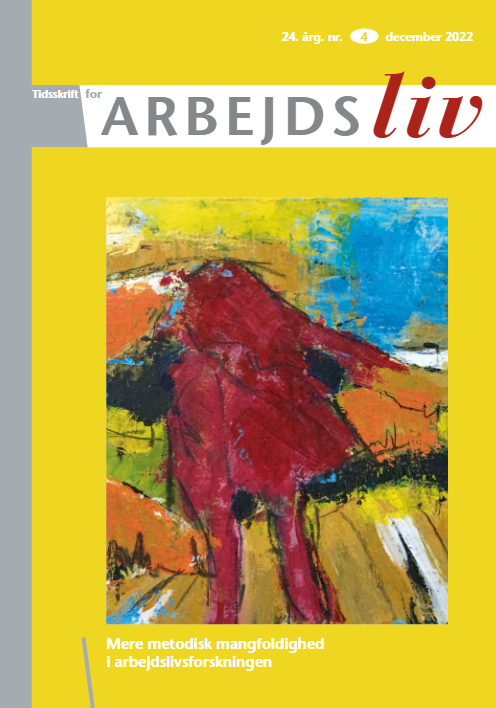Negotiating access and research roles within the care sector and in slaughterhouses
– experiences from ethnographic fieldwork
DOI:
https://doi.org/10.7146/tfa.v24i4.135161Keywords:
Etnografi, Arbejdsmiljøforskning, ForskerrolleAbstract
Ethnographic methods are well-known research methods in working life studies. Textbooks provide insight into considerations about access, positioning, and social roles. But how does the negotiation of access and role play out across different workplace contexts? Based on an analysis of field notes from observation and interviews in the care sector and in slaughterhouses, this article contributes with ethnographic experiences about the relationship between the researcher and the field. The article illustrates how the negotiation of role plays out across contexts, and how the context influences the ethnographer’s ability to take on different research roles. The article shows how auto-ethnographic descriptions can provide a unique insight into the work context and that they can be combined with conventional ethnographic descriptions. If the context allows it, different ethnographic methods can complement each other and help the researcher to clarify and switch between roles during the fieldwork and in the written presentation of this. However, an important methodological point of the article is that the role of the researcher and the methodological approach is not something that is freely chosen but something that is negotiated and determined by the context and requires that the ethnographer has something to negotiate with that is given value in the given context.
Downloads
Published
How to Cite
Issue
Section
License
Copyright (c) 2022 Forfatteren og tidsskriftet i samarbejde

This work is licensed under a Creative Commons Attribution-NonCommercial 4.0 International License.
Forfattere, der publicerer deres værker via dette tidsskrift, accepterer følgende vilkår:
- Forfattere bevarer deres ophavsret og giver tidsskriftet ret til første publicering, samtidigt med at værket ét år efter publiceringen er omfattet af en Creative Commons Attribution-licens, der giver andre ret til at dele værket med en anerkendelse af værkets forfatter og første publicering i nærværende tidsskrift.
- Forfattere kan indgå flere separate kontraktlige aftaler om ikke-eksklusiv distribution af tidsskriftets publicerede version af værket (f.eks. sende det til et institutionslager eller udgive det i en bog), med en anerkendelse af værkets første publicering i nærværende tidsskrift.
- Forfattere har ret til og opfordres til at publicere deres værker online (f.eks. i institutionslagre eller på deres websted) forud for og under manuskriptprocessen, da dette kan føre til produktive udvekslinger, samt tidligere og større citater fra publicerede værker (se The Effect of Open Access).





